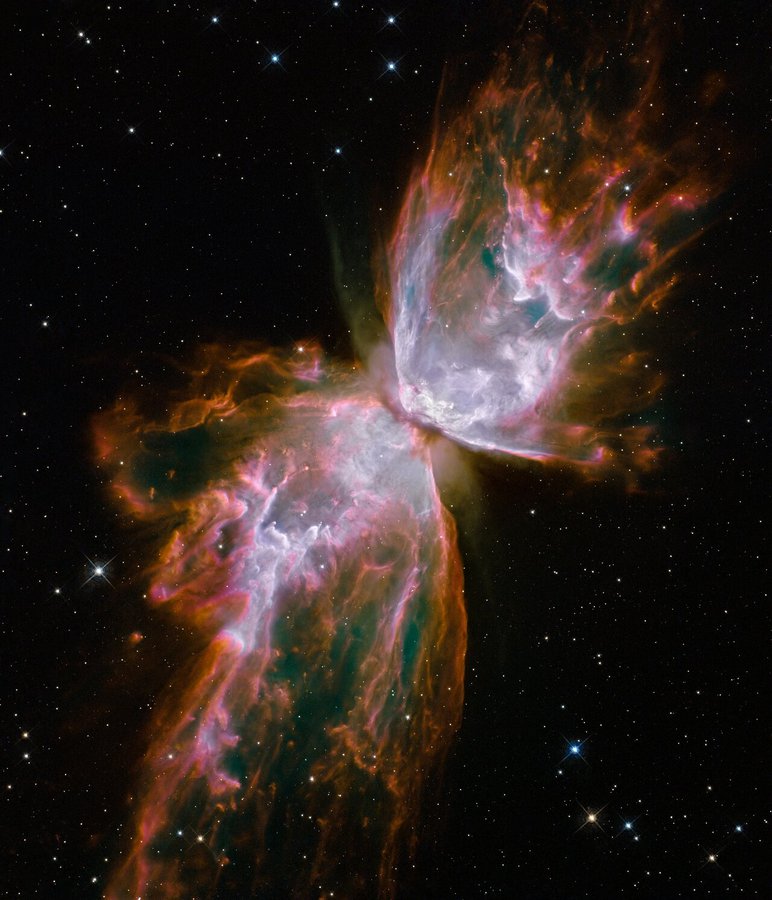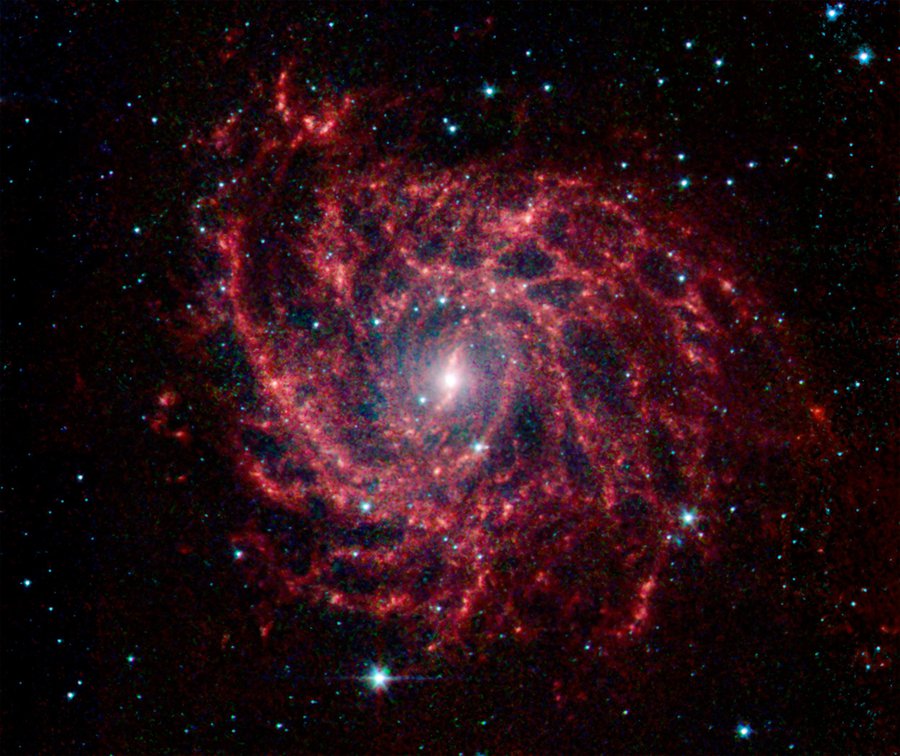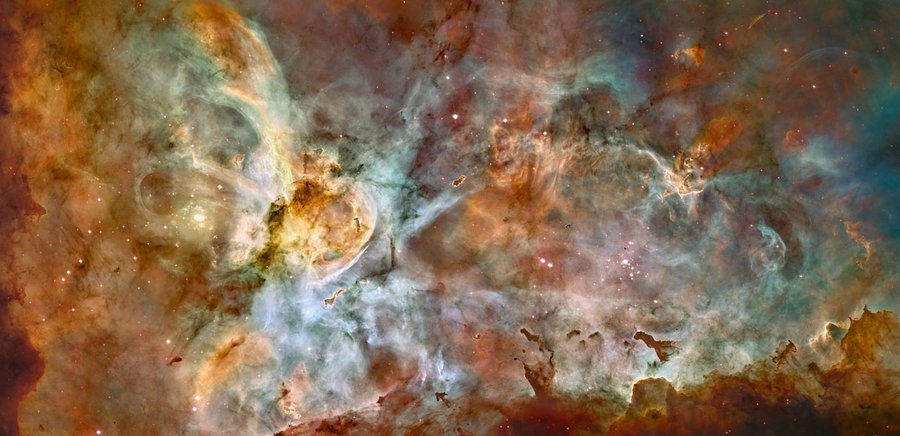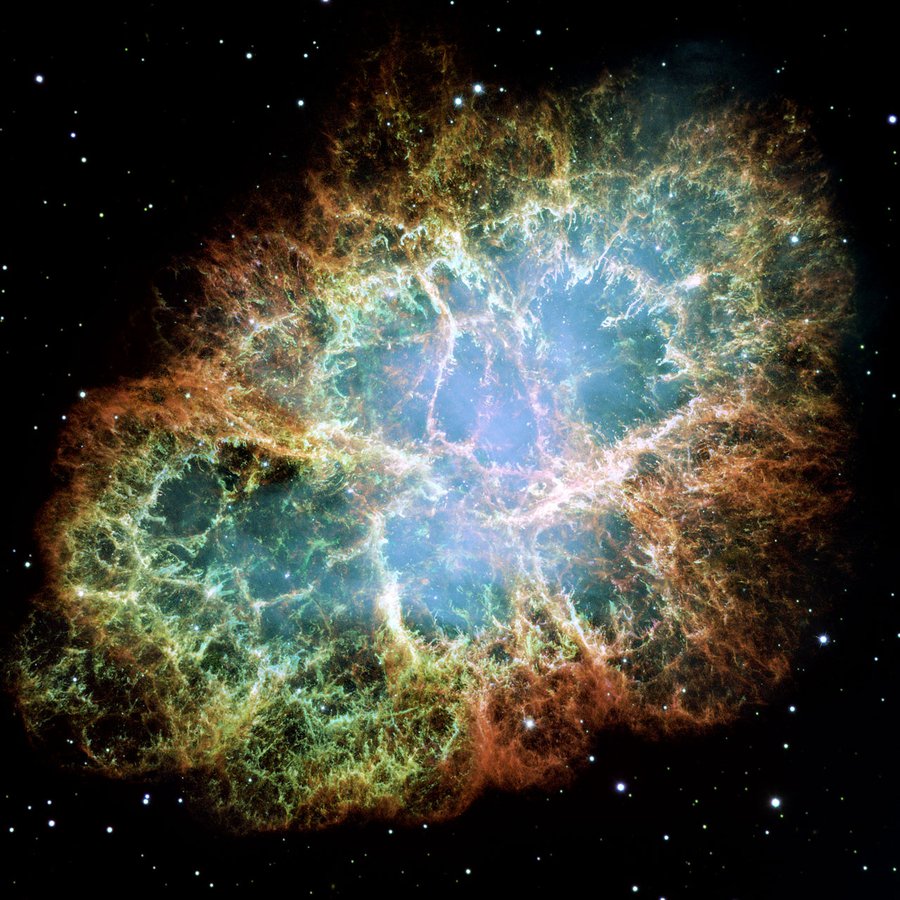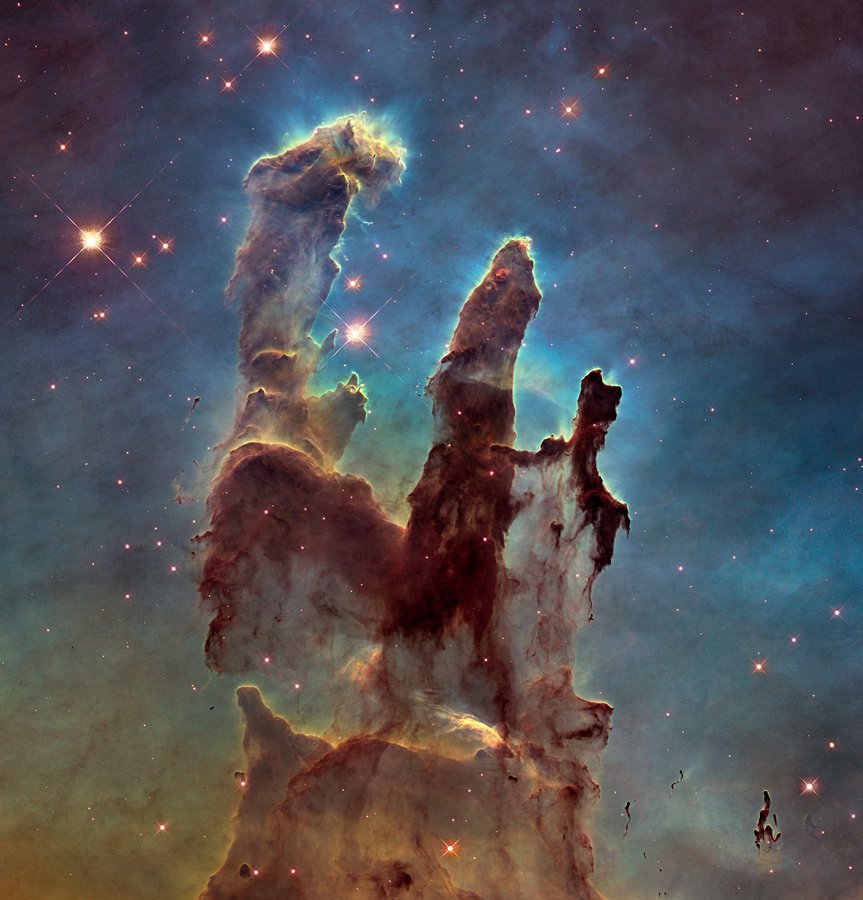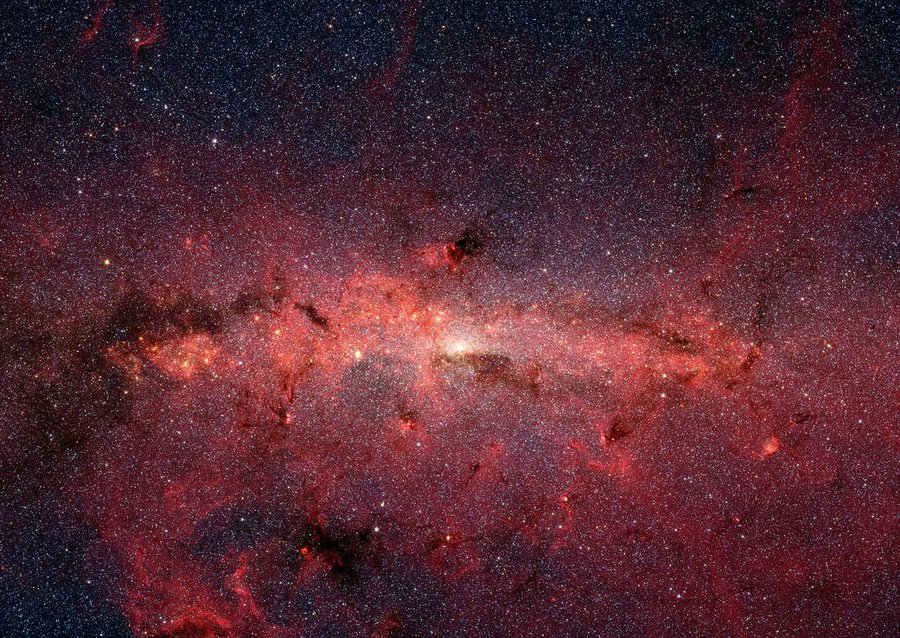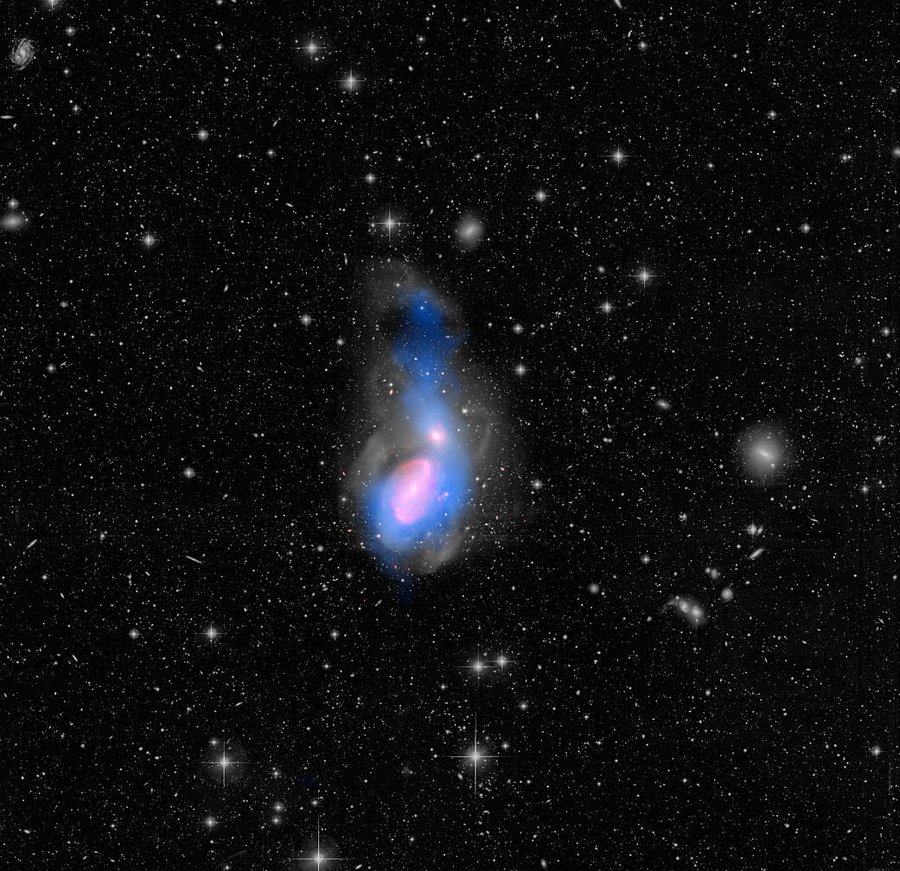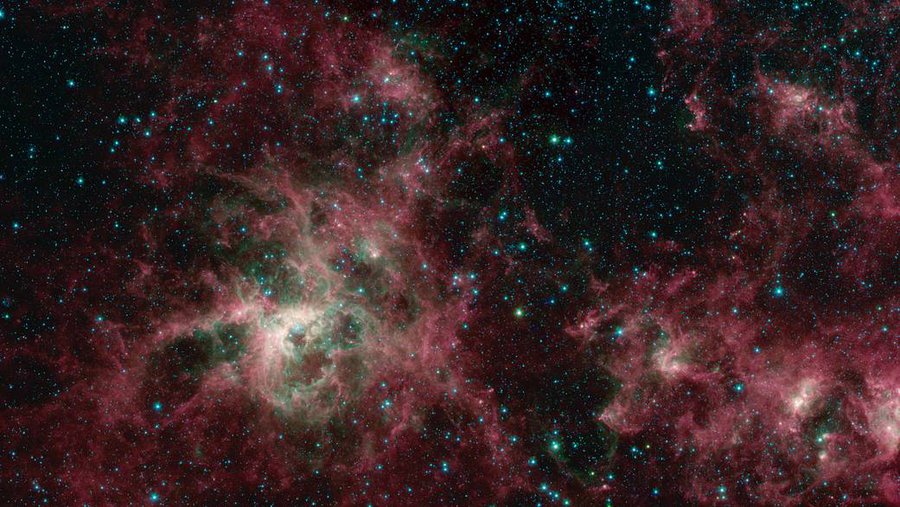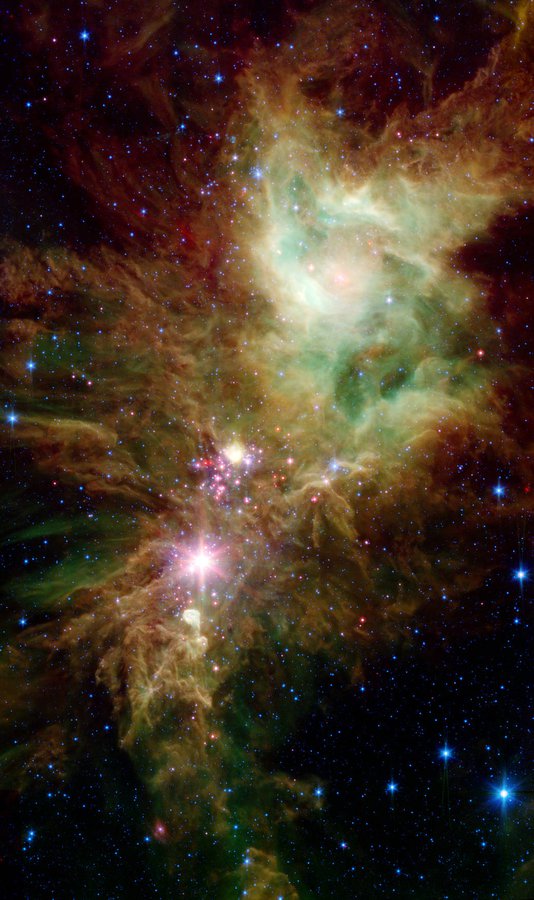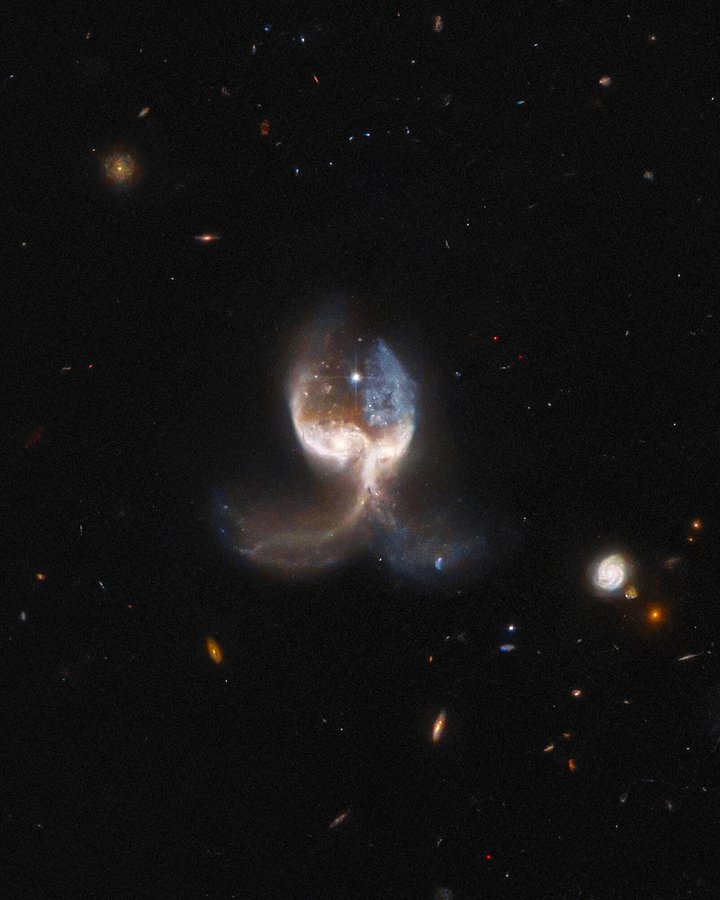Huge waves are sculpted in this two-lobed nebula some 3000 light-years away in the constellation of Sagittarius. This warm planetary nebula harbours one of the hottest stars known and its powerful stellar winds generate waves 100 billion kilometres high. The waves are caused by supersonic shocks, formed when the local gas is compressed and heated in front of the rapidly expanding lobes. The atoms caught in the shock emit the spectacular radiation seen in this image. Credit: ESA & Garrelt Mellema (Leiden University, the Netherlands)

Galactic Porn
A Loop dedicated to astronomy photography. Admittedly mostly NASA. Only images. With a short description, state a source and respect copyright. Comments are welcome. Best viewed in Dark Mode.
Open Loop 17
-
NGC 6302 was imaged on 27 July 2009 with Hubble's Wide Field Camera 3 in ultraviolet and visible light. Filters that isolate emissions from oxygen, helium, hydrogen, nitrogen and sulphur from the planetary nebula were used to create this composite image.
These Hubble observations of the planetary nebula NGC 6302 are part of the Hubble Servicing Mission 4 Early Release Observations.
Credit: NASA, ESA and the Hubble SM4 ERO Team -
In celebration of the 31st anniversary of the launch of the NASA/ESA Hubble Space Telescope, astronomers aimed the celebrated observatory at one of the brightest stars seen in our galaxy to capture its beauty.
The giant star featured in this latest Hubble Space Telescope anniversary image is waging a tug-of-war between gravity and radiation to avoid self-destruction. The star, called AG Carinae, is surrounded by an expanding shell of gas and dust. The nebula is about five light-years wide, which equals the distance from here to our nearest star, Alpha Centauri. Credit: NASA, ESA and STScI -
Hubble's view of the Carina Nebula shows star birth in a new level of detail. The fantasy-like landscape of the nebula is sculpted by the action of outflowing winds and scorching ultraviolet radiation from the monster stars that inhabit this inferno. In the process, these stars are shredding the surrounding material that is the last vestige of the giant cloud from which the stars were born. Credit: NASA, ESA
-
The Crab is among the most interesting and well studied objects in astronomy. This image is the largest image ever taken with Hubble's WFPC2 camera. It was assembled from 24 individual exposures taken with the NASA/ESA Hubble Space Telescope and is the highest resolution image of the entire Crab Nebula ever made. Credit: NASA/ESA
-
The NASA/ESA Hubble Space Telescope has revisited one of its most iconic and popular images: the Eagle Nebula’s Pillars of Creation. This image shows the pillars as seen in visible light, capturing the multi-coloured glow of gas clouds, wispy tendrils of dark cosmic dust, and the rust-coloured elephants’ trunks of the nebula’s famous pillars. Credit: NASA, ESA/Hubble and the Hubble Heritage Team
-
This Hubble image, captured and released to celebrate the telescope’s 23rd year in orbit, shows part of the sky in the constellation of Orion (The Hunter). Rising like a giant seahorse from turbulent waves of dust and gas is the Horsehead Nebula, otherwise known as Barnard 33.
This image shows the region in infrared light, which has longer wavelengths than visible light and can pierce through the dusty material that usually obscures the nebula’s inner regions.
Credit: NASA, ESA, and the Hubble Heritage Team -
A new feature in the evolution of galaxies has been captured in this image of galactic interactions. The two galaxies seen here -- NGC 3226 at the top, NGC 3227 at the bottom -- are awash in the remains of a departed third galaxy, cannibalized by the gravity of the surviving galaxies. NASA/Spitzer Space Telescope
-
Newborn Stars Blow Bubbles in the Cat's Paw Nebula. This image from NASA's Spitzer Space Telescope shows the Cat's Paw Nebula, so named for the large, round features that create the impression of a feline footprint. The nebula is a star-forming region in the Milky Way galaxy, located in the constellation Scorpius.
-
The first image of the supermassive black hole at the centre of our own Milky Way galaxy. The image was produced by a global research team called the Event Horizon Telescope (EHT) Collaboration, using observations from a worldwide network of radio telescopes. Source: https://eventhorizontelescope.org/blog/astronomers-reveal-first-image-black-hole-heart-our-galaxy





